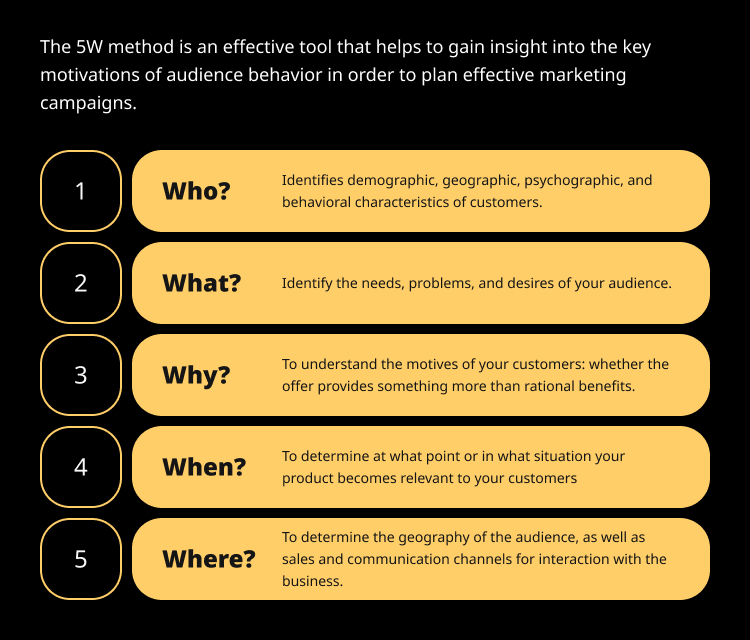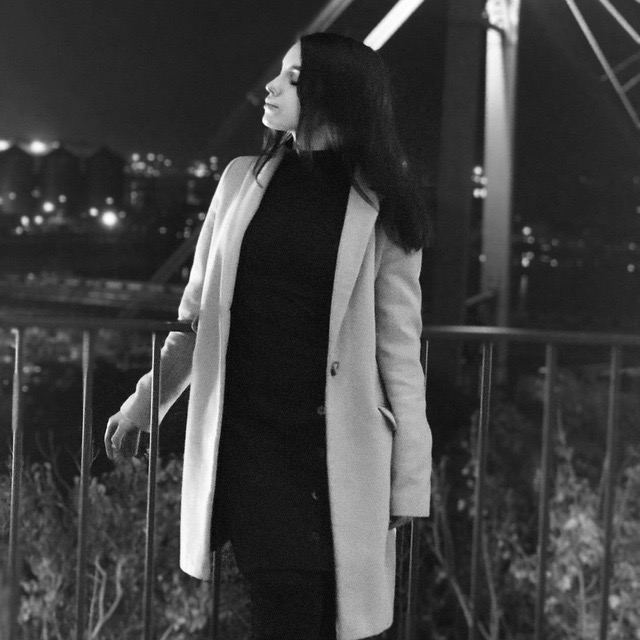We were approached by representatives of a premium fashion brand with a history and production in Ukraine. They already had over 150 thousand followers on Instagram. This brand creates clothes that are worn by judges, lawyers, and CEOs. These are clothes for confident women who know exactly what they want.
But even such brands have crises.
The war broke the market. Some businesses just couldn’t take it anymore. Production stopped, plans were zeroed out, sales fell.
Many companies stopped working…
Our client survived.
🟡 Instagram is live, the audience responds, but sales are unstable.
🟡 The website is there, but it doesn’t sell.
🟡 Uniqueness — there is, but it is lost among competitors.
We have signed a non-disclosure agreement (NDA), so this case study is unnamed and unreferenced.
How we started
🟡 The brand has been around since the 2010s.
🟡 Instagram — more than 150,000 subscribers.
🟡 The average check is $130.
But there was no marketing system inside.
Lead generation was built on 90% of Meta ads.
The site was a business card without SEO, without structure, without sales.
There were clients. But after the war broke out, it was the result of inertia, not systematic work.
The goals were ambitious:
☑ To return to 350 sales per month.
☑ To scale up.
☑ To reach a stable cash flow that does not depend on the collection.
We were faced with the challenge of rethinking the role of the brand in the customer’s life. And to create a system that will withstand time, seasonality and competition.
What’s happening in the fashion market
When we started working on the strategy, it became clear that it could not be done without context.
Fashion is not about stability. It is about dynamics, moods, changes.
It is important to hear the market in real time and be able to move in it.
Estimating the size of the premium segment market in Ukraine
According to forecasts, the total volume of the Luxury Apparel market in Ukraine in 2025 will reach $58.57 million. The women’s segment accounts for approximately 55%, or $32.2 million.
The potential for growth is enormous.
Dynamics of recent years (2021-2023)
● 2021 is the peak, before a full-scale war.
● 2022 — -35% in the premium segment (customer outflow, drop in imports, closure of outlets).
● 2023 was a year of recovery:
✅ The market returned to pre-war levels.
✅ Demand for “Made in Ukraine” has increased.
Conclusion: demand is back. But the buyer has changed. Now people are looking qualitatively and meaningfully — instead of a glossy facade, people are searching for depth.
📈 In 2025, the women’s premium segment market in Ukraine is expected to reach $29-32 million. Yes, despite the war, emigration, and falling purchasing power, this segment is growing.
And now the main thing: our client already operates in this segment, but occupies… 0.5% of the market.
🔺 Key trends:
- Made in Ukraine Premium
- National pride + a desire to support one’s own.
- Loyalty to local brands increased by 12%.
- This is not only an emotional but also a rational purchase — the quality is better than the mass market.
- Sustainable & Ethical Fashion
- The trend towards eco-friendly materials and responsible production.
- Consumers want to know not only “what” but also “how” it was created.
- Premium Athleisure (smart comfort)
- After the pandemic and the war, people value comfort over form.
- A style that makes you feel confident — both in the office and in everyday life.
- Return to seasonality
- Even in times of war, the classic seasonality in sales remains:
🟢 Peaks: March — May, September — December.
🔴 Declines: January — February, June — August. - This allows for flexible promotional planning.
📍 Imports of brands such as H&M and ZARA have significantly decreased, which has freed up attention and purchasing power for Ukrainian brands.
Audit of touch points
Before making any recommendations, we always enter a business not with templates, but with a question:
“If I were a customer of this brand, what would I feel, think, do?”
We always dive into two levels at the same time:
● A content marketer — analyzes visuals, messages, presentation format, CTA, and perception structure to form a communication strategy.
● A strategic marketer — evaluates the funnel logic, channel potential, touch completeness, and system economics to answer the question of what exactly and how to do to achieve the target indicators.
Website: looks like a gallery, but resembles a maze
The first seconds on a client’s website are like entering an expensive showroom: beautiful, lots of white space, great visuals. But the average time spent on the site is too low (up to 10 seconds) and the bounce rate is over 80%. Not because it’s not interesting, but because it’s inconvenient.
We have formed hypotheses as to why this is so perceived:
- There is no focus in communication: the site has neither brand ideology nor history.
- The user does not understand what to trust — there are no real reviews, certificates, or the “face” of the brand.
- The catalog has filters, but there is no logic for selecting them, either by color or availability.
Social media: the loudest channel, but the least controlled
At first glance, Instagram seems to be alive — there are a lot of followers, Reels are flying.
🎯 Advertising: beautiful, but without communication
When we opened the ad account, we saw less than 10 active campaigns, mostly with random visuals and models on a white background.
There is a minimum of information. Emotions seem to be there, but without a twist.
💬 Prices? No.
💬 CTA? Preferably “write to Direct”.
💬 Product? Just “a beautiful girl in a beautiful dress”.
For the budget segment, such formats can really work, but for the premium segment, you should focus on customer care and increase your value. That’s why we’ve outlined which formats are worth checking out.
If you know the feeling of “we have everything, but it’s not organized into a system,” we look forward to a free consultation.
Competitor analysis
When we analyze a fashion brand, there is a great temptation to focus on the visuals, flirt with aesthetics, and get carried away with the image.
But we started with a different question:
Is it clear to the client how this brand differs from others?
Because beauty is expected by default today.
And the position, the feeling of being in the image, is what causes action.
We analyzed competitors in two areas:
🔹 The content marketer researched Instagram, stories, product descriptions, creatives — everything the client sees.
🔹 The strategic marketer immersed himself in the logic of positioning, the level of the funnel, the depth of the site, and the connection of communication with sales.
After that, we analyzed it:
✅ 1. Sites
Objective: to evaluate the structure, UX, and ability to convert.
🔸 Most are aesthetic but non-functional.
🔸 There is no clear funnel: there is a gap from the first screen to the CTA.
🔸 Product descriptions are technical, with no focus on fit, condition, or scenarios.
✅ 2. Social networks
Goal: content analysis, warm-up funnels, and communication.
🔸 Content without a system: no headings, CTA, warm-up logic.
🔸 Stories — only “atmosphere”, no action.
🔸 Tone of voice — without convincing intonations.
✅ 3. Positioning
Objective: to read messages, values, differences.
🔸 Everyone talks about “quality”, “femininity”, “style”.
🔸 There is no formulated USP.
🔸 Communication is for everyone, but not about anyone in particular.
Do you have a product but don’t understand why sales are unstable? Let us conduct a diagnosis.
In the customer’s skin: a service test
People often talk about “customer experience” as something abstract.
But experience is a very concrete thing. It’s the moment when a woman opens Instagram, writes to Direct, chooses between two dresses, doesn’t get an answer… and goes to a competitor.
That is why “mystery shopper” is a strategic tool.
In the process of developing the marketing strategy, we conducted secret testing and lived the real customer journey: from the first contact to the end of the dialog — in several fashion companies.
We approached our competitors as ordinary customers:
- Ask typical questions via Instagram, Telegram, or the website.
- We went through the entire scenario of customer experience: from greeting to ending the dialog.
- They evaluated the speed of response, the level of personalization, the depth of consultations, and the work with objections.
👉 In a highly competitive environment, service is a part of positioning. If the service does not meet the brand’s promises, the customer will not return, even if the product is impeccable.
Some of the conclusions after the study:
- The response time varies from 2 minutes to 7 hours. And this already forms the impression of the brand.
- Communication is often formal, without personal involvement: answers are short, without questions in return, without efforts to help.
- Rarely does anyone try to close a sale. More often than not, the client has to drive the dialog.
- There is no personalization: managers do not remember the customer, do not take into account his request in a repeated dialog.
- Low flexibility in difficult situations: a defensive reaction to a request for possible defects or a return, no options.
Do you want to understand how your brand is really perceived by customers? We’ll analyze it through the eyes of the customer: from the first contact to the point of decision. We’ll show you where interest disappears, what reduces trust, and what stimulates a purchase.
Who is buying?
At the start, the client described the audience as follows:
“Our clients are business-minded, self-sufficient women aged 25+. There are many lawyers, government officials, and top managers. But we also want to attract younger women.”
Does the phrase sound familiar?
But it’s not enough to communicate.
We conducted a detailed segmentation of the project’s target audience using the 5W method — Who, What, When, Where, Why.

This made it possible to clearly understand who buys, what they are looking for when they make a decision, where they come into contact with the brand, and most importantly, why they choose it.
Why did we do it?
✅ To ensure that the content strategy works for deep engagement, not background presence.
We determined how to speak to different segments so that each message was relevant and caused action.
✅ To target advertising campaigns to specific behavioral groups.
This allows you to optimize your budget, increase your CTR, and reduce your cost per acquisition.
✅ To ensure that the website conveys use cases and decision-making arguments.
Segmentation helped to create user journeys based on user motivation, context, and barriers.
✅ To ensure that the positioning was not abstract, but grounded in the real needs of the target audience.
Message formulas, tone of voice, visual accents — everything was based on clear data, not assumptions.
For business, this means:
👉 Less chaos in communication.
👉 More precision in promotion.
👉 A deeper resonance with customers — and more action from them.
Segmentation is not just a portrait of a customer. It’s a guide to choosing them.
We help brands see who they’re really talking to and customize their marketing so that this dialog ends in action.
Why they buy from you
At first glance, it seems that the choice in the fashion segment is an impulse: saw → liked → bought.
But in reality, especially in the premium segment, each purchase is a sequence of triggers, micro-doubts, and expectations that the brand must read and subconsciously talk through.
Why do they buy from you and not from dozens of others?
We have created a methodology that makes the customer’s choice to buy obvious.

The project marketer has collected and structured a list of choice factors (160+) that influence the client’s decision.
In reality, a customer does not evaluate a brand comprehensively. He clings to 3-5 signals that are important to him and makes a decision based on them:
🟢 trust / ❌ hesitate;
🟢 it suits me / ❌ it’s not mine;
🟢 I can imagine myself in it / ❌ I close the tab.
But the fact is that the specific list of choice factors can be unique for each person.
That’s why we collect and structure choice factors to systematically influence most decision points.
📌Selection factors are not a checklist. It is the strategic foundation of the brand.
We identify what makes a customer say “yes” and turn it into a system that works at every touch point.
For more information about our choice factors service, please visit this link.
Your audience already has reasons to buy, they just aren’t articulated.
We’ll help you break them down and turn them into a marketing foundation. Sign up for a free consultation.
The “why you” formula
Positioning is one of the key assets of a brand that directly affects its recognition, conversion, price perception, loyalty, and cost of customer acquisition.
Without a clear positioning, a brand loses its competitive ability at the level of communication — even if it has a quality product.
How do you know if your brand needs positioning?
- You have a quality product, but you can’t clearly articulate why a customer should choose you.
- You have different messages on Instagram, on your website, in newsletters.
- You are constantly being compared to competitors, even though you are “about something else”.
- The team does not have a single vision: how we speak, to whom, why, what our brand is about.
Іnsight: unless your brand has a clear, consistent, and recognizable positioning, the customer is the one who invents who you are. And not always in a way that is beneficial to you.
We have done a comprehensive job of developing a positioning that will become the basis for the marketing system and the foundation for scaling.
In the process, we synchronized:
- Customer’s internal values.
- Profile and needs of target segments.
- Competitor analysis data.
- Customer choice factors.
- Current tone of voice and branded silence zones.
How it is used in practice:
- In managers’ communication and tone of voice.
- In social media, topics and content of posts.
- In the structure of landing pages and product descriptions.
- In advertisements.
For more information about our positioning service, please visit this link.
Actions for the future: steps to scale
When the system is working, the question naturally arises: What’s next? How to grow? What tools should we implement next?
That’s why we don’t end the project with just a presentation and file transfer. Together with the strategy, we formed a strategic backlog — a list of tasks to be implemented that have logic, are tied to business goals, and can be implemented in the next stages to scale and consolidate the brand’s position.
What is a strategic backlog?
A plan for future marketing initiatives that respond to growth challenges, for example:
- LTV increase;
- entering new segments;
- increasing recognition;
- expanding sales channels;
- consolidating the community and maintaining brand value.
We will help you build a system, whether you are a startup with ambition or a stable business with a need to scale:
👉 from identity to positioning;
👉 from content to funnel;
👉 from the first touch to predictable sales.
Tell us WHERE you want to go, and we will show you HOW to get there.
📩 Sign up for a free consultation




